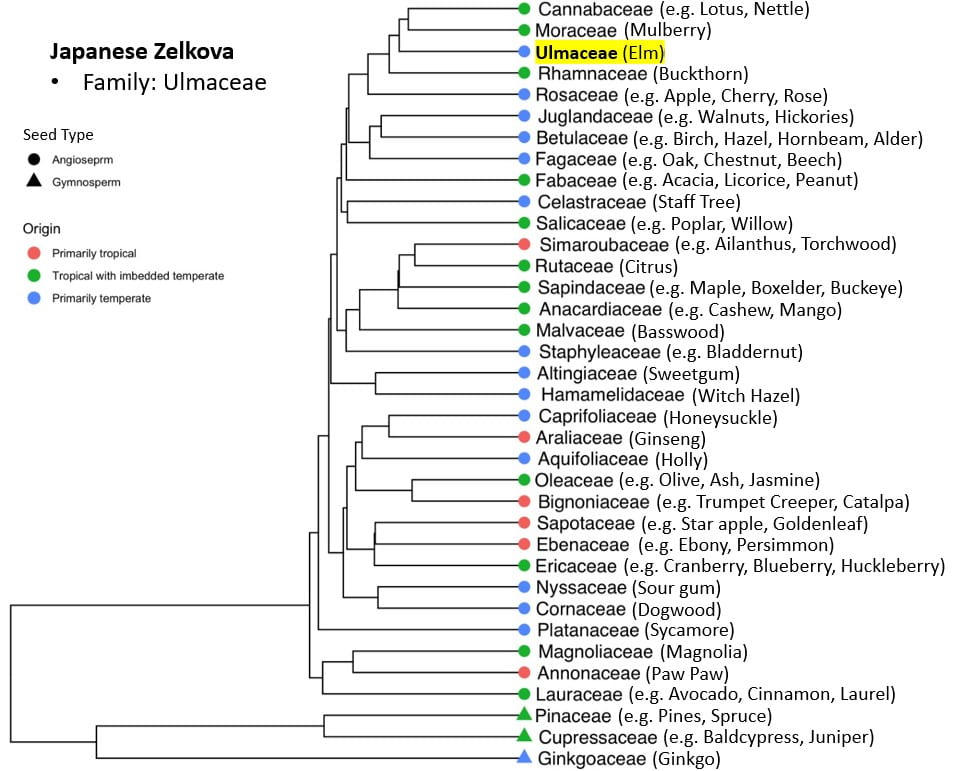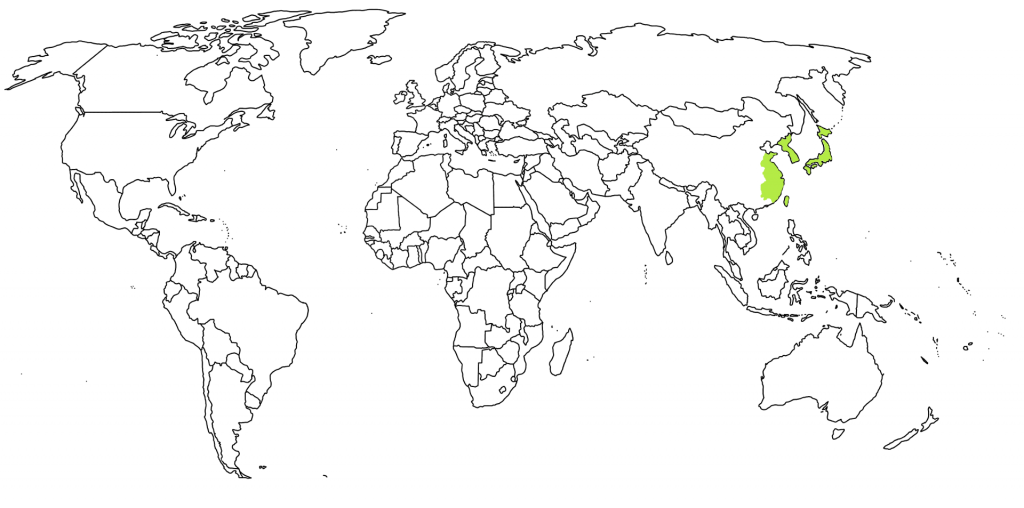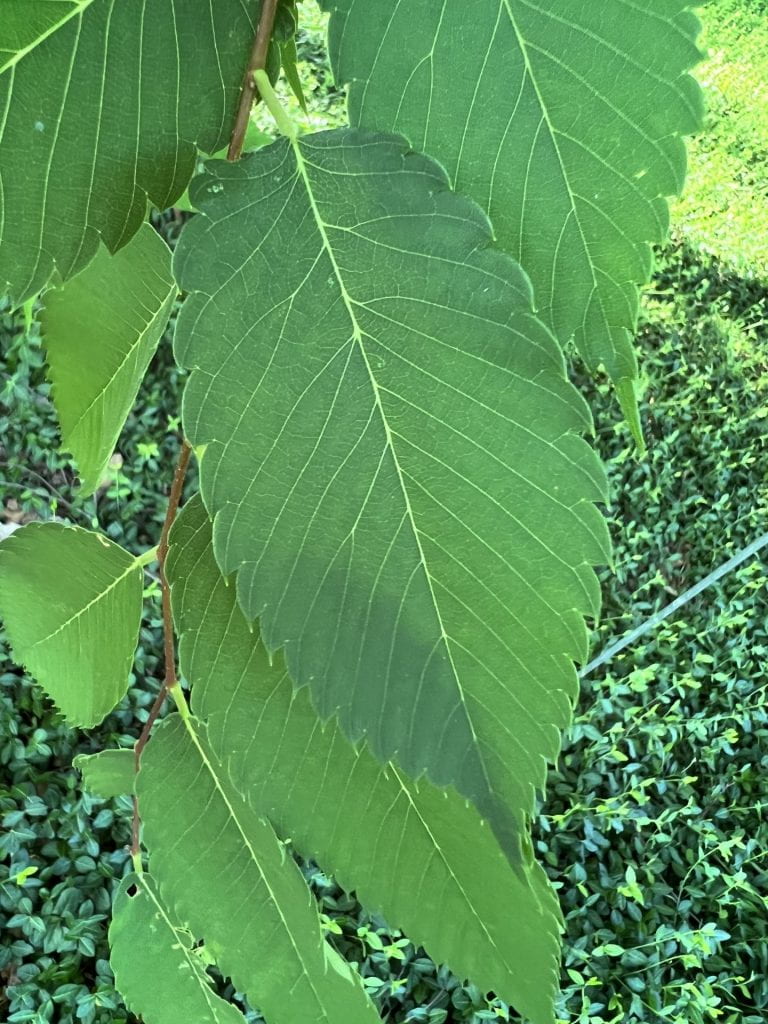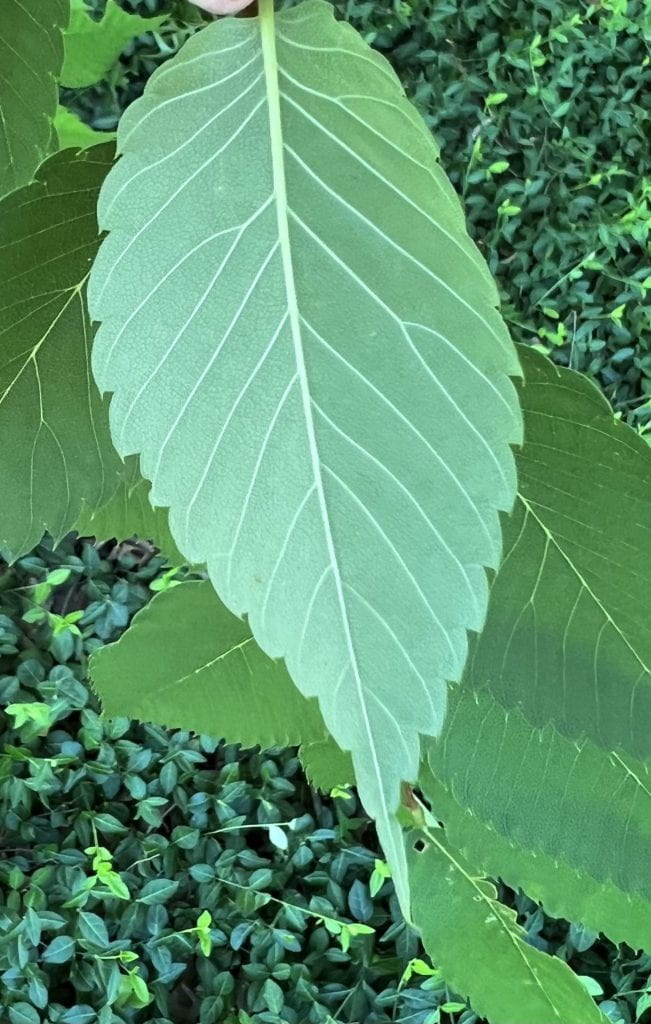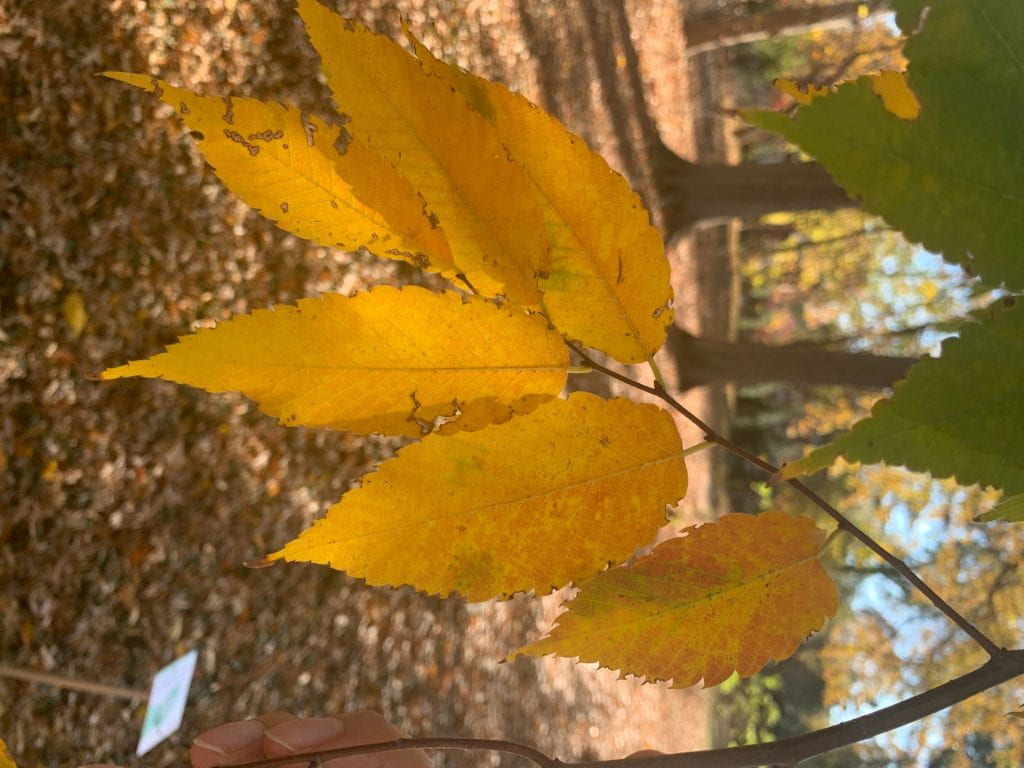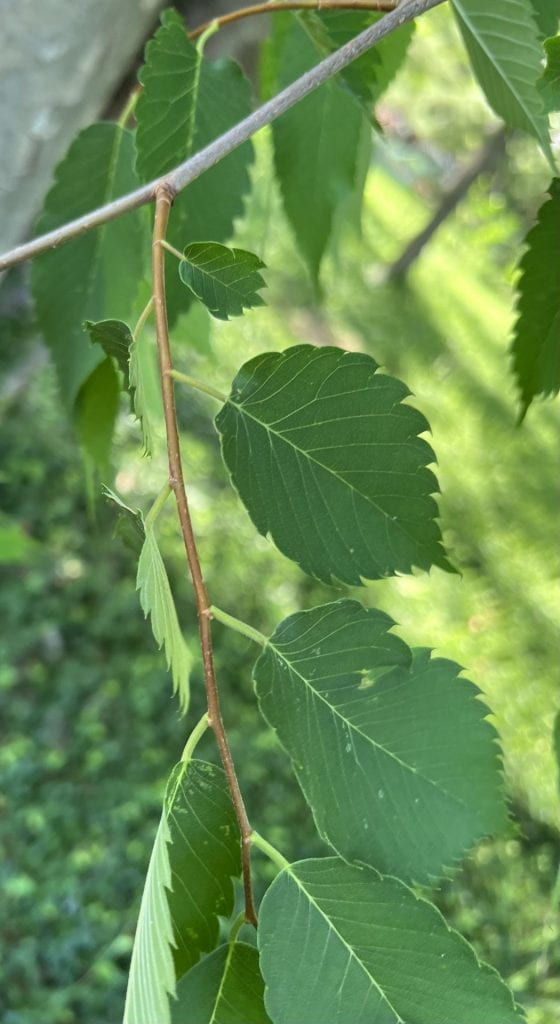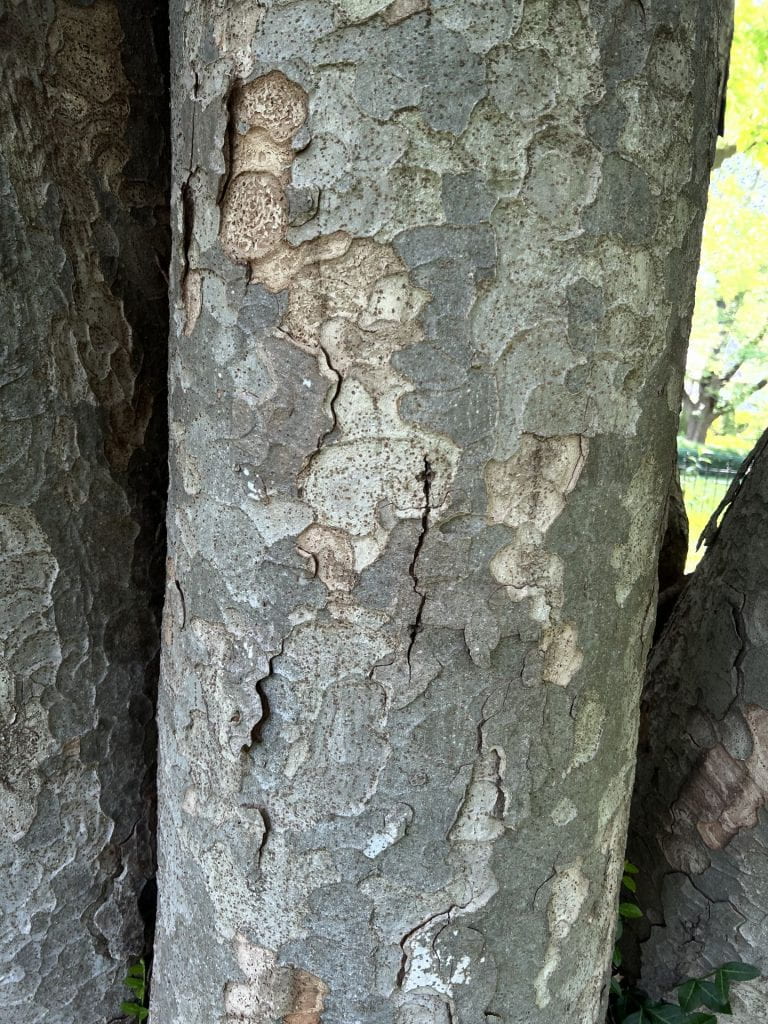Japanese Zelkova
Arbor walk #59, Treekeeper ID #5340

A member of the Elm family which has been promoted as a replacement to American Elms because of its high degree of resistance to Dutch Elm Disease. As the name implies, the tree is native to Japan as well as Taiwan and eastern China, where it is highly valued as a commercial timber source.
This particular specimen is quite old and has been cut back several times, which has resulted a uniquely high number of diverging trunks.

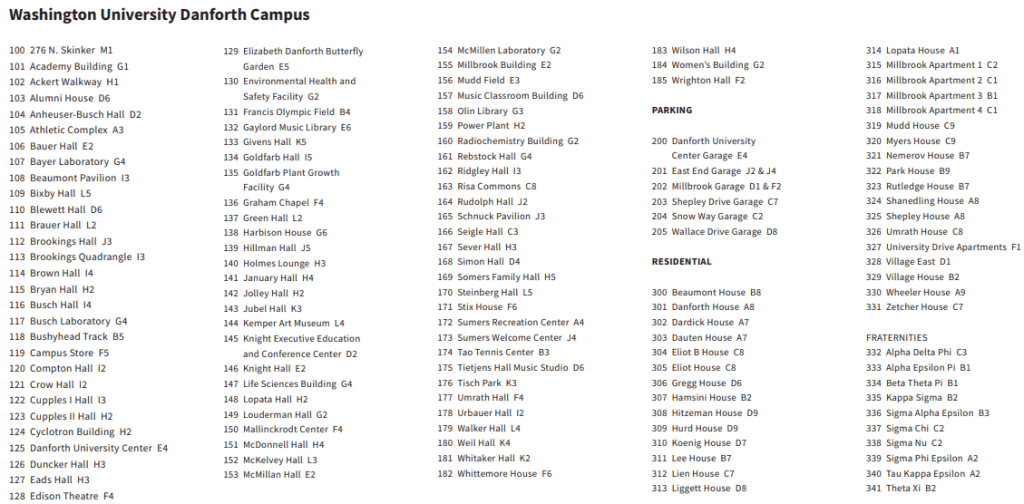
GPS Coordinates
N/A
Percent Concrete
N/A
Distance to Buildings
| Year | Close Building #1 | Close Building #2 | Close Building #3 |
|---|---|---|---|
| 2020 | Whittemore House, 14.90 m | Harbison House, 54.23 m | Stix International House, 58.46 m |
Distance to Other Species
| Year | Close Species #1 | Close Species # 2 | Close Species # 3 |
|---|---|---|---|
| 2020 | Common Hackberry, 8.62 m | Pin Oak, 13.12 m | Pin Oak, 15.26 m |
Standard Measurements
| Year | Height (m) | DBH (cm) | Caliper (m) | Crown Diameter N-S (m) | Crown Diameter E-W (m) | Average Crown Diameter (m) |
|---|---|---|---|---|---|---|
| 2020 | 24.7886 | 45.86 | N/A | 17.09 | 16.67 | 16.88 |
| 2023 | 28.07 | 162 | N/A | 18.27 | 19.19 | 18.73 |
Nests and Pests
| Year | Description |
|---|---|
| 2020 | Several large patches of reddish fungal growth plus small red ‘lenticels’/eruptions clustered in certain areas Patches of dark bacterial wetwood on an old wound 2 round holes from boring beetles Areas directly under the bark show heavy insect activity, including a silken coccoon and fennel seed-shaped eggcases Many large cankers Covered in tiny black bugs just under the bark (<2mm length); appear to be beetle larvae Small shoot of ivy growing up the base of the trunk |
Leaf Identification
The leaves of the Japanese Zelkova are 2″ to 5″ long with very serrated margins and pinnate veins that sometimes split off in pairs toward the leaf margins. They are a medium green with a pale green underside and turn yellow or red in the fall.
Twig and Bud Identification
The twig is golden brown and slightly zig zag.
Bark Identification
The Japanese Zelkova has gray bark with irregularly shaped scales that do not peel but can flake off.
Fruit Identification
The fruits are small, ovoid drupes. They are not showy or particularly attractive. They ripen in the fall.
[photo forthcoming]
Flower Identification
The flowers of the Japanese Zelkova are green and inconspicuous. They bloom in the spring.
[photo forthcoming]
